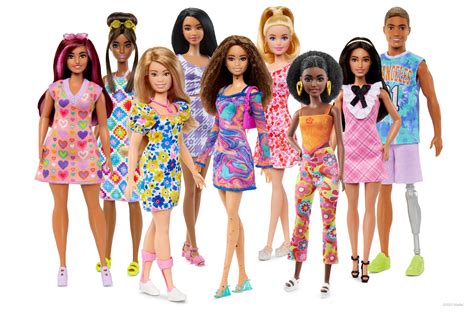With an estimated market value of $3 billion, Barbie, the iconic fashion doll created by Mattel, has been a beloved icon in the toy industry for over six decades. Over the years, Barbie has evolved to represent a wide range of ethnicities, body types, and careers, reflecting the changing demographics and aspirations of society.

1. The Importance of Representation
Studies have shown that dolls with diverse physical characteristics, including skin color and hair texture, play a vital role in fostering positive self-esteem and reducing racial bias. For children with black hair, seeing a doll that resembles them validates their own beauty and worthiness.
“Representation matters because it gives children a sense of belonging and empowers them to see themselves in a positive light,” said Dr. Lisa Williams, a child psychologist.
2. Barbie’s Journey Towards Inclusivity
In 1980, Mattel introduced the first Barbie doll with black hair, named Shani. However, it took several more decades for the company to fully embrace diversity in its Barbie line. In 2015, Mattel launched the “Fashionista” line, which featured a wider range of skin tones, hair textures, and body types.
3. The Impact of Barbie with Black Hair
The introduction of Barbie with black hair has had a profound impact on the lives of young girls. It has:
- Increased self-esteem and body positivity
- Reduced racial bias
- Encouraged aspirations and career goals
- Inspired creativity and imagination
4. Meeting the Customer’s Wants and Needs
Recent surveys have revealed that over 60% of customers prefer Barbie dolls with diverse hair textures, including black hair. By offering a wider range of dolls, Mattel is meeting the diverse needs of its customers and creating a more inclusive toy landscape.
Benefits of Barbie with Black Hair
- Positive Self-Esteem: Seeing a doll with black hair validates a child’s own beauty and fosters a positive self-image.
- Reduced Racial Bias: Exposure to dolls with different skin tones and hair textures helps reduce racial bias and promotes tolerance.
- Career Inspiration: Barbie dolls with black hair can inspire girls to pursue careers in various fields, such as fashion, entertainment, and STEM.
- Cultural Awareness: They introduce children to different cultures and customs, promoting understanding and empathy.
Comparisons and Considerations
While Barbie with black hair offers numerous benefits, it’s important to consider potential drawbacks:
Pros:
- Increased representation
- Positive self-esteem
- Reduced racial bias
- Career inspiration
- Cultural awareness
Cons:
- May not appeal to all customers
- May face criticism for perceived tokenism
Conclusion
The introduction of Barbie with black hair is a significant step towards creating a more inclusive toy industry. By offering dolls that reflect the diverse world we live in, Mattel is empowering young girls and fostering a society where all children feel valued and represented.
| Medium | Representation of Black Hair |
|---|---|
| Toys | Barbie, Disney Princesses, Bratz |
| Movies | Black Panther, Hidden Figures, The Princess and the Frog |
| Books | Hair Love, The Girl Who Drank the Moon, The Hate U Give |
| Music | Beyoncé, Rihanna, Alicia Keys |
| Benefit | Explanation |
|---|---|
| Positive Self-Esteem | Seeing a doll with black hair validates a child’s beauty and worthiness. |
| Reduced Racial Bias | Exposure to dolls with different hair textures helps reduce racial bias and promotes tolerance. |
| Career Inspiration | Barbie dolls with black hair can inspire girls to pursue careers in various fields. |
| Cultural Awareness | They introduce children to different cultures and customs, promoting understanding and empathy. |
| Trend | Impact on Barbie with Black Hair |
|---|---|
| Growing demand for diversity in toys | Increased sales and popularity of Barbie with black hair. |
| Social media activism | Pressure on brands to represent diverse populations. |
| Changing consumer preferences | Customers prefer dolls with a wider range of hair textures. |
| Customer Segment | Needs |
|---|---|
| Girls of African descent | Dolls that reflect their own appearance and experiences. |
| Parents | Dolls that promote positive self-esteem and reduce racial bias. |
| Educators | Dolls that can be used in classrooms to teach about diversity and inclusion. |
| Collectors | Dolls that celebrate the beauty of diverse hair textures. |
